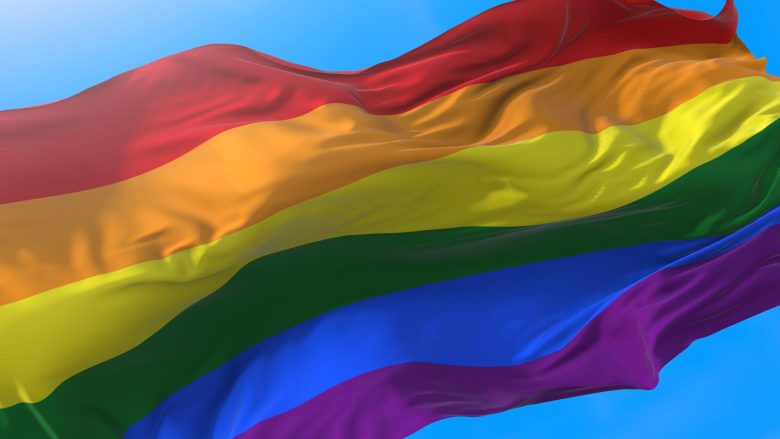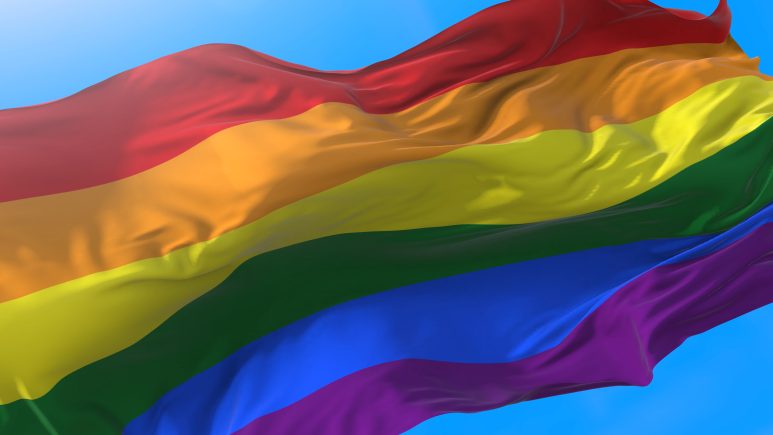By Sara Giudice
In the Western world, where homo-bi-trans-phobia has resurfaced stronger than ever, this year, June has been a time for genuine celebration in the community. It was also a time for big companies to paint their logos rainbow colours or pride themselves on their latest finding in diversity marketing (a practice that is, nonetheless, generally welcomed by the contemporary public). And what are broadcasters and streaming platforms if not big companies of entertainment?

In 2005, Ilene Chaiken (The L Word, Showtime, 2004) participated in the seminar on gay television called “No Limits” at the Museum of Television and Radio, and talked in a way that 2020s contemporary audiences might find contradicting. On one hand, she recognized the great impact of her production: “You’re not just creating television. You are saving lives” she said, as reported by Allison Glock in the New York Times. And yet later in the article, Chaiken is reported to have said that she ‘[rails] against the idea that pop television is a political medium’. In 2023, where identity politics is pervasive, such a statement might be mind-boggling, especially if considering the current state of the discussion on queer representation.
TV shows like Sense8 (Netflix, 2015) and Pose (FX, 2018) are now major audiovisual points of reference for the queer communities in the US and Europe, on the back of The L Word and Queer as Folk (Channel 4, 1999). They offer great screenwriting, positive narrations of queerness rooted in history, with a keen eye on themes such as race, culture, fluidity of gender and class struggle. But they are also accompanied by a plethora of queer-themed TV shows that barely saw the light of day; great examples include First Kill (Netflix, 2022), about lesbian vampires, and I am Not Okay with This (Netflix, 2020), about a lesbian with deadly superpowers. Both werecancelled after one season.
This adds to the minority status of LGBTQ+ representation on the screen, which is slightly decreasing overall in the US, as stated by GLAAD’s latest report “Where We Are on TV 2022-2023”. Another example could be Italy. When asked about the state of queer representation in Italy, Flavio Nuccitelli, writer and screenwriter, tells MDI that it’s overall increased, but it is only because most queer productions come from outside the country (mostly the US and the UK). They are also more acceptable if they are ‘polished and polite’. And yet, the very same big controlling international corporation that contributes to the enlargement or shrinkage of queer representation is the same that brought Heartstopper (SeeSaw, 2022) to the public, a queer show with one of the less stereotypical examples of lesbians on T o how do we wrap our head around this? As Ted Sarandos, Netflix’s chief content officer, explained to Vulture, one of the main metrics for renewal is “completion”, which refers to the pace at which viewers go through episodes and to the end of the season. That could explain not only the latest cancellation spree, but also the cancellation of many queer-themed shows. In the same article, Cindy Holland, Netlix’s vice president of original content, said that decision-making for renewals is ‘70% gut and 30% data’, which suggests a sense of volatility that is also highlighted by Kim Masters for The Hollywood Reporter, regarding Amazon Studios’ producing strategies. This demonstrates that representation is not only about viewers, but also about workers.
In 2021, a letter was published online by the Writers’ Guild of American West’s LGBTQ+ Writer’s Committee, where the writers asked Hollywood: ‘Do you see us?’ The letter is an articulated list of demands, but one passage in particular mentions the situation of queer workers:
Last month, in a survey of 158 members of the WGAW’s LGBTQ+ Committee, a staggering 46% of writers reported that they have hidden their identity – or felt compelled to do so – in an industry environment. […] When asked why, the top three most cited reasons were: fear of discrimination; fear of not getting or losing a job; and not wanting to be stereotyped.
The survey also found that ‘in the past five years, 22% of LGBTQ+ Committee members report having been the target of overt discrimination and/or harassment in an industry setting based on their identity’.
In Europe, recent research from Birmingham City University, authored by Finbarr Toesland, demonstrated that an impressive amount of LGBTQ+ journalists in the UK face or have faced discrimination in the workplace. According to the report, ‘86% of respondents say they experience abuse and harassment’ and ‘87% of survey respondents do not believe enough is being done to tackle the problem of harassment and abuse against LGBTQ journalists’. ILGA Europe claims in their 2023 Annual Review that bias motivated speech, or hate speech, is clearly on the rise. However, ILGA Europe also ‘finds a growing support among societies for LGBTI people’. That is: the situation is rough, but we can get out of it. One way out is representation itself, but being on the screen isn’t merely enough.
To truly achieve a “good representation” of queer characters, one should refer to queer writers. Not because cisgender heterosexual ones wouldn’t be able to physically build an authentic, fair depiction of a queer experience, but only because the queer experience is often poorly told to and by those same cishet writers (that is, workers). The problem with queer representation is the problem with queer workers: the writers, the screenwriters, the journalists, and others who should contribute to the overall change in the narration of the queer experience on screen or on paper. Marzia D’Amico, post-doc in Modern Literature, tells MDI: ‘I think we must refer to the fact that marginalised and mis-represented people on the screen live this because nobody like them can take the floor. I’ll explain myself better: in the pyramidal organisation that representation offers, for each good result of a complex character, at least 10 authors work for a proper, multi-faceted intelligent characterisation. How many people, in that group, are BIPOC, disabled, queer or working class? The non-diversification and the lack of commitment to the integration of different looks and writings brought the misinterpretation of plural identity phenomena.’ They also add: ‘Until we don’t actively diversify our cultural basins, that common lake that is television imagery will always be unfulfilling and unable to give back the wonderful complexity formed by the identities that make up every single human being.’

